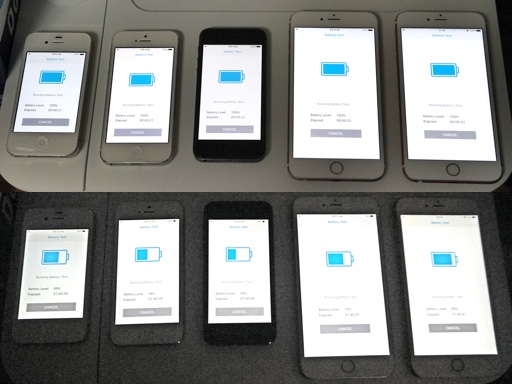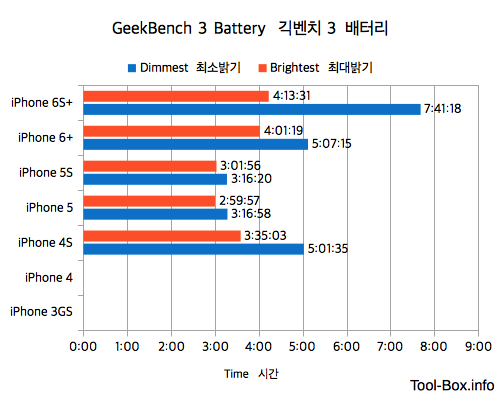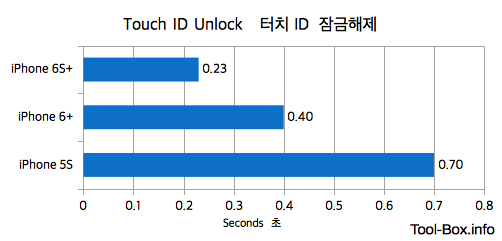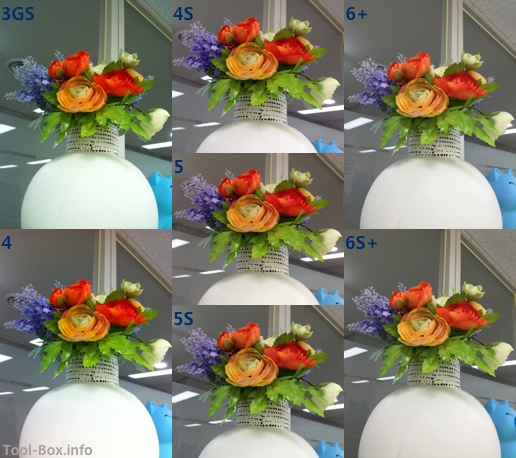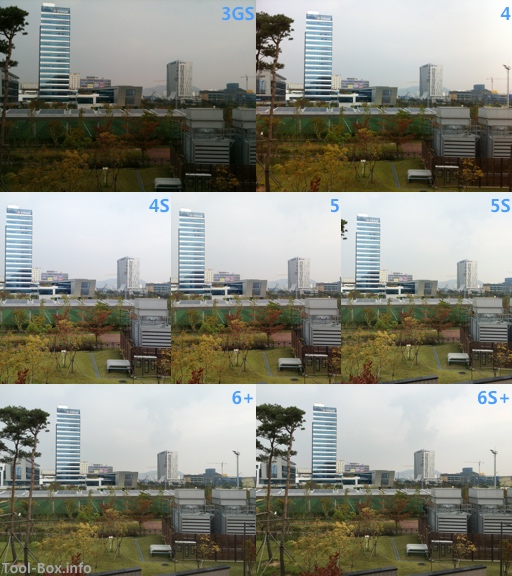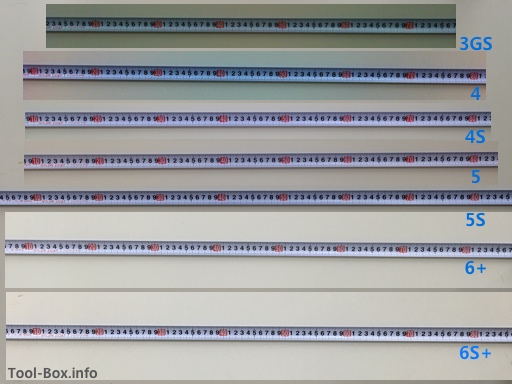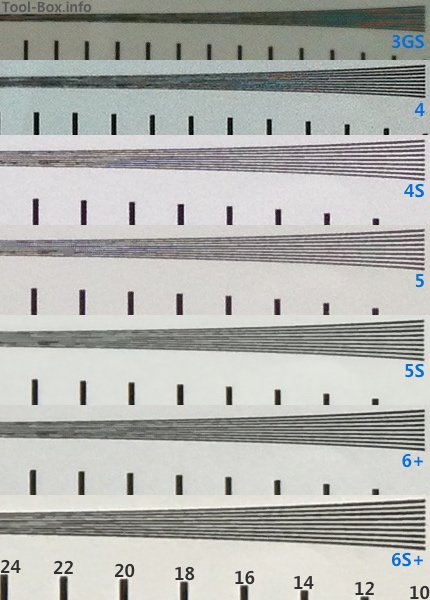Comparing 7 iPhones: Battery (Part 2 of 2)
Posted by Wesley on
Shortly after finishing the battery tests for the earlier post, iPhone 4S and later generations received the iOS 9.1 update. Then the thought crossed my mind that I should have tested the "Low Power Mode" introduced with iOS 9. It's a feature touted as enabling you to use the phone up to an hour more by cutting off some background activities, reduce the screen brightness, and slow down the processor. Would it equally benefit different generations of the iPhones? I ran the GeekBench 3 again to find out.
Here, the only major differentiating factor would be the processor speed because the iPhones were in airplane mode and the screen brightness was manually set to lowest like the previous tests. I did re-run the tests for the 'normal' mode because the iOS version was changed from 9.0.2 to 9.1. And as always, the values are normalized to the designed battery capacity.
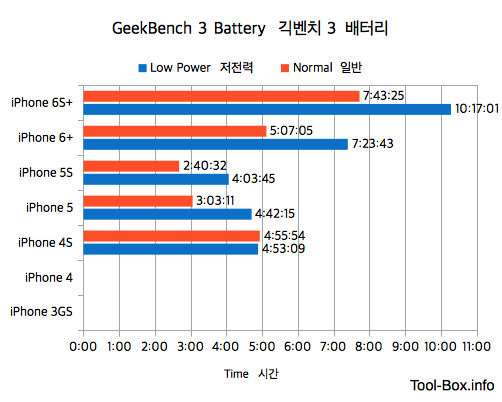
This revealed that Apple's claims were not overblown. With the exception of iPhone 4S, the iPhones indeed lasted significantly longer under Low Power Mode: about one and a half hours with 5 and 5S, and about two and a half hours with the Plus phones, which are around 30 to 50% gain. It seems that the processor is clocked down to squeeze out as much battery time as possible. On the other hand, the processor for 4S can't seem to throttle back for this mode, resulting in practically no changes. This means that for 4S, the real-life battery savings would have to come from other tweaks.
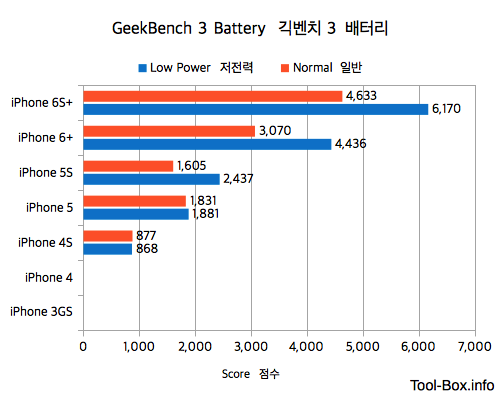
And if we measure how much work is done with each mode, it gets more interesting. It confirms that the 4S isn't doing anything different, while iPhone 5 seems to fully trade battery time for speed. Meanwhile, the newer generations are able to do more work under the Low Power Mode. This means that if the tasks you do a lot on your phone isn't impacted too much by this mode, it might not be a bad idea to keep this mode on while you do those things if you want to maximize battery life.
Continue reading "Comparing 7 iPhones: Battery (Part 2 of 2)"
Here, the only major differentiating factor would be the processor speed because the iPhones were in airplane mode and the screen brightness was manually set to lowest like the previous tests. I did re-run the tests for the 'normal' mode because the iOS version was changed from 9.0.2 to 9.1. And as always, the values are normalized to the designed battery capacity.

Low Power Mode's effects in GeekBench 3 battery test times (normalized)
| Power Mode | iPhone 4S | iPhone 5 | iPhone 5S | iPhone 6 Plus | iPhone 6S Plus |
|---|---|---|---|---|---|
| Default | 04:29:00 | 02:59:20 | 02:25:00 | 05:01:10 | 07:56:10 |
| Low Power | 04:26:30 | 04:36:20 | 03:40:10 | 07:15:10 | 10:34:00 |
This revealed that Apple's claims were not overblown. With the exception of iPhone 4S, the iPhones indeed lasted significantly longer under Low Power Mode: about one and a half hours with 5 and 5S, and about two and a half hours with the Plus phones, which are around 30 to 50% gain. It seems that the processor is clocked down to squeeze out as much battery time as possible. On the other hand, the processor for 4S can't seem to throttle back for this mode, resulting in practically no changes. This means that for 4S, the real-life battery savings would have to come from other tweaks.

Low Power Mode's effects in GeekBench 3 battery test scores (normalized)
And if we measure how much work is done with each mode, it gets more interesting. It confirms that the 4S isn't doing anything different, while iPhone 5 seems to fully trade battery time for speed. Meanwhile, the newer generations are able to do more work under the Low Power Mode. This means that if the tasks you do a lot on your phone isn't impacted too much by this mode, it might not be a bad idea to keep this mode on while you do those things if you want to maximize battery life.
